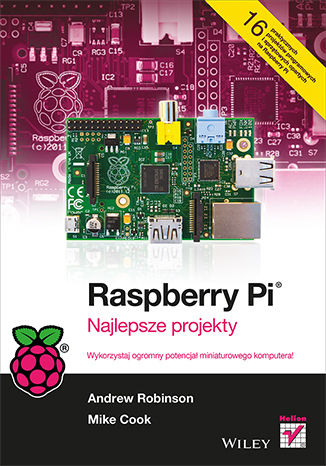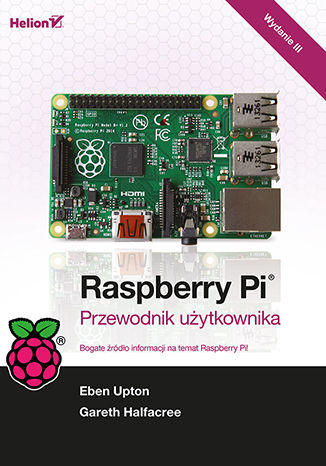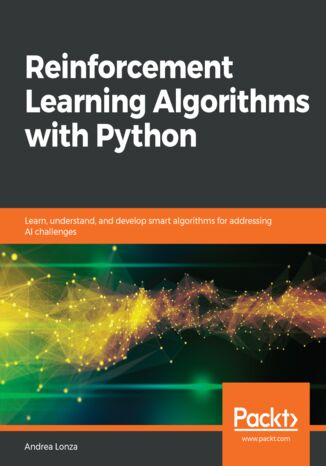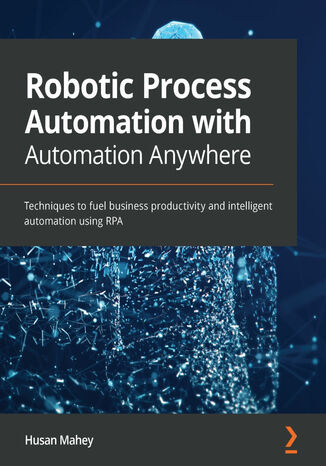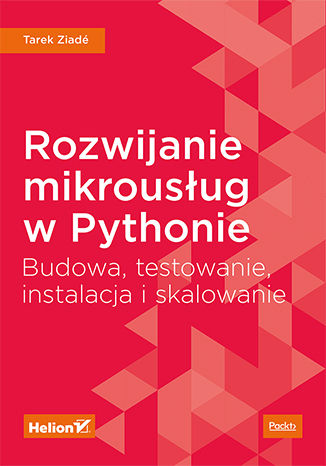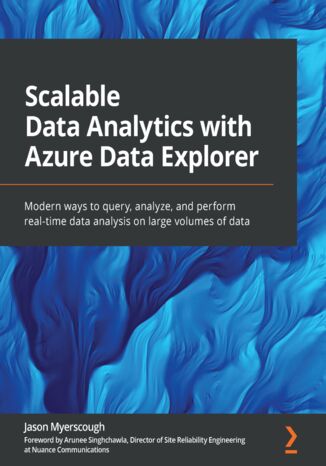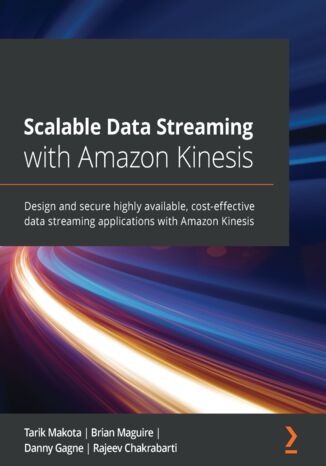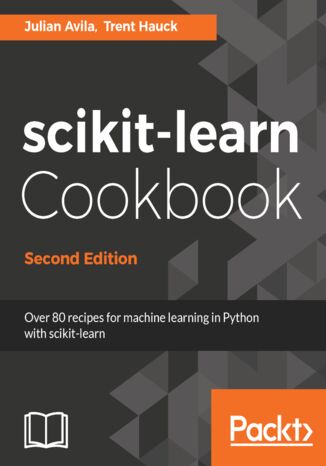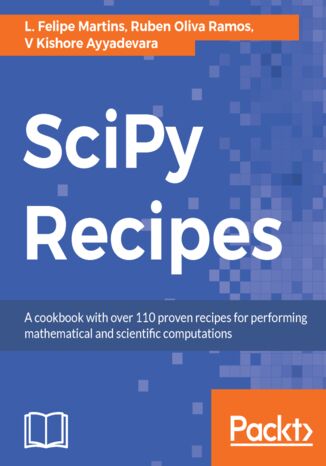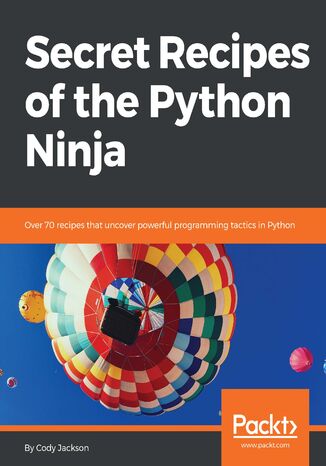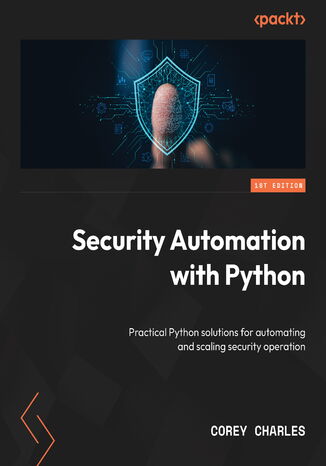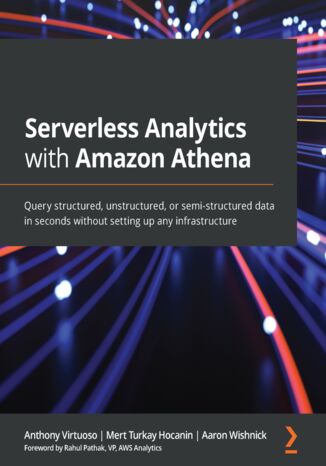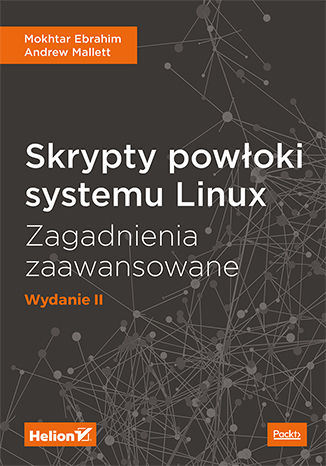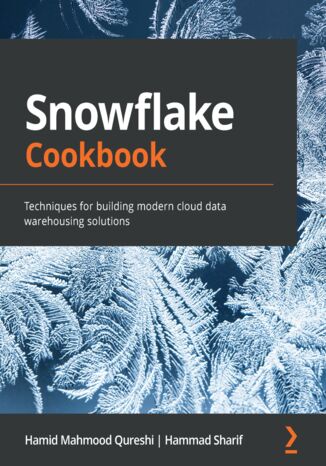Categories
Ebooks
-
Business and economy
- Bitcoin
- Businesswoman
- Coaching
- Controlling
- E-business
- Economy
- Finances
- Stocks and investments
- Personal competence
- Computer in the office
- Communication and negotiation
- Small company
- Marketing
- Motivation
- Multimedia trainings
- Real estate
- Persuasion and NLP
- Taxes
- Social policy
- Guides
- Presentations
- Leadership
- Public Relation
- Reports, analyses
- Secret
- Social Media
- Sales
- Start-up
- Your career
- Management
- Project management
- Human Resources
-
For children
-
For youth
-
Education
-
Encyclopedias, dictionaries
-
E-press
- Architektura i wnętrza
- Health and Safety
- Biznes i Ekonomia
- Home and garden
- E-business
- Ekonomia i finanse
- Esoterecism
- Finances
- Personal finance
- Business
- Photography
- Computer science
- HR & Payroll
- For women
- Computers, Excel
- Accounts
- Culture and literature
- Scientific and academic
- Environmental protection
- Opinion-forming
- Education
- Taxes
- Travelling
- Psychology
- Religion
- Agriculture
- Book and press market
- Transport and Spedition
- Healthand beauty
-
History
-
Computer science
- Office applications
- Data bases
- Bioinformatics
- IT business
- CAD/CAM
- Digital Lifestyle
- DTP
- Electronics
- Digital photography
- Computer graphics
- Games
- Hacking
- Hardware
- IT w ekonomii
- Scientific software package
- School textbooks
- Computer basics
- Programming
- Mobile programming
- Internet servers
- Computer networks
- Start-up
- Operational systems
- Artificial intelligence
- Technology for children
- Webmastering
-
Other
-
Foreign languages
-
Culture and art
-
School reading books
-
Literature
- Antology
- Ballade
- Biographies and autobiographies
- For adults
- Dramas
- Diaries, memoirs, letters
- Epic, epopee
- Essay
- Fantasy and science fiction
- Feuilletons
- Work of fiction
- Humour and satire
- Other
- Classical
- Crime fiction
- Non-fiction
- Fiction
- Mity i legendy
- Nobelists
- Novellas
- Moral
- Okultyzm i magia
- Short stories
- Memoirs
- Travelling
- Narrative poetry
- Poetry
- Politics
- Popular science
- Novel
- Historical novel
- Prose
- Adventure
- Journalism, publicism
- Reportage novels
- Romans i literatura obyczajowa
- Sensational
- Thriller, Horror
- Interviews and memoirs
-
Natural sciences
-
Social sciences
-
School textbooks
-
Popular science and academic
- Archeology
- Bibliotekoznawstwo
- Cinema studies
- Philology
- Polish philology
- Philosophy
- Finanse i bankowość
- Geography
- Economy
- Trade. World economy
- History and archeology
- History of art and architecture
- Cultural studies
- Linguistics
- Literary studies
- Logistics
- Maths
- Medicine
- Humanities
- Pedagogy
- Educational aids
- Popular science
- Other
- Psychology
- Sociology
- Theatre studies
- Theology
- Economic theories and teachings
- Transport i spedycja
- Physical education
- Zarządzanie i marketing
-
Guides
-
Game guides
-
Professional and specialist guides
-
Law
- Health and Safety
- History
- Road Code. Driving license
- Law studies
- Healthcare
- General. Compendium of knowledge
- Academic textbooks
- Other
- Construction and local law
- Civil law
- Financial law
- Economic law
- Economic and trade law
- Criminal law
- Criminal law. Criminal offenses. Criminology
- International law
- International law
- Health care law
- Educational law
- Tax law
- Labor and social security law
- Public, constitutional and administrative law
- Family and Guardianship Code
- agricultural law
- Social law, labour law
- European Union law
- Industry
- Agricultural and environmental
- Dictionaries and encyclopedia
- Public procurement
- Management
-
Tourist guides and travel
- Africa
- Albums
- Southern America
- North and Central America
- Australia, New Zealand, Oceania
- Austria
- Asia
- Balkans
- Middle East
- Bulgary
- China
- Croatia
- The Czech Republic
- Denmark
- Egipt
- Estonia
- Europe
- France
- Mountains
- Greece
- Spain
- Holand
- Iceland
- Lithuania
- Latvia
- Mapy, Plany miast, Atlasy
- Mini travel guides
- Germany
- Norway
- Active travelling
- Poland
- Portugal
- Other
- Przewodniki po hotelach i restauracjach
- Russia
- Romania
- Slovakia
- Slovenia
- Switzerland
- Sweden
- World
- Turkey
- Ukraine
- Hungary
- Great Britain
- Italy
-
Psychology
- Philosophy of life
- Kompetencje psychospołeczne
- Interpersonal communication
- Mindfulness
- General
- Persuasion and NLP
- Academic psychology
- Psychology of soul and mind
- Work psychology
- Relacje i związki
- Parenting and children psychology
- Problem solving
- Intellectual growth
- Secret
- Sexapeal
- Seduction
- Appearance and image
- Philosophy of life
-
Religion
-
Sport, fitness, diets
-
Technology and mechanics
Audiobooks
-
Business and economy
- Bitcoin
- Businesswoman
- Coaching
- Controlling
- E-business
- Economy
- Finances
- Stocks and investments
- Personal competence
- Communication and negotiation
- Small company
- Marketing
- Motivation
- Real estate
- Persuasion and NLP
- Taxes
- Social policy
- Guides
- Presentations
- Leadership
- Public Relation
- Secret
- Social Media
- Sales
- Start-up
- Your career
- Management
- Project management
- Human Resources
-
For children
-
For youth
-
Education
-
Encyclopedias, dictionaries
-
E-press
-
History
-
Computer science
-
Other
-
Foreign languages
-
Culture and art
-
School reading books
-
Literature
- Antology
- Ballade
- Biographies and autobiographies
- For adults
- Dramas
- Diaries, memoirs, letters
- Epic, epopee
- Essay
- Fantasy and science fiction
- Feuilletons
- Work of fiction
- Humour and satire
- Other
- Classical
- Crime fiction
- Non-fiction
- Fiction
- Mity i legendy
- Nobelists
- Novellas
- Moral
- Okultyzm i magia
- Short stories
- Memoirs
- Travelling
- Poetry
- Politics
- Popular science
- Novel
- Historical novel
- Prose
- Adventure
- Journalism, publicism
- Reportage novels
- Romans i literatura obyczajowa
- Sensational
- Thriller, Horror
- Interviews and memoirs
-
Natural sciences
-
Social sciences
-
Popular science and academic
-
Guides
-
Professional and specialist guides
-
Law
-
Tourist guides and travel
-
Psychology
- Philosophy of life
- Interpersonal communication
- Mindfulness
- General
- Persuasion and NLP
- Academic psychology
- Psychology of soul and mind
- Work psychology
- Relacje i związki
- Parenting and children psychology
- Problem solving
- Intellectual growth
- Secret
- Sexapeal
- Seduction
- Appearance and image
- Philosophy of life
-
Religion
-
Sport, fitness, diets
-
Technology and mechanics
Videocourses
-
Data bases
-
Big Data
-
Biznes, ekonomia i marketing
-
Cybersecurity
-
Data Science
-
DevOps
-
For children
-
Electronics
-
Graphics/Video/CAX
-
Games
-
Microsoft Office
-
Development tools
-
Programming
-
Personal growth
-
Computer networks
-
Operational systems
-
Software testing
-
Mobile devices
-
UX/UI
-
Web development
-
Management
Podcasts
- Ebooks
- Programming
- Python
Python
Raspberry Pi. Najlepsze projekty
Wykorzystaj ogromny potencjał miniaturowego komputera! Raspberry Pi to prawdziwy komputer o rozmiarach lekko przerośniętej karty kredytowej. Posiada on ogromny potencjał, całkiem sporą moc obliczeniową, a do tego kosztuje naprawdę niewiele. Platforma ta była projektowana z myślą o nauce programowania dla dzieci. Jednak, jak to często bywa, historia potoczyła się zupełnie inaczej. Obecnie Raspberry Pi znajduje zastosowanie jako serwer WWW, odtwarzacz filmów lub sterownik urządzeń. Masz dobry pomysł, żeby wykorzystać Pi w projekcie? A może jeszcze nie wiesz, co chciałbyś zrobić z Raspberry Pi? Ta książka rozwieje wszystkie Twoje wątpliwości i podsunie pomysły na atrakcyjne projekty. W trakcie lektury poznasz budowę Raspberry Pi oraz dowiesz się, jak go podłączyć i uruchomić system Linux. W kolejnych rozdziałach przygotujesz grę kółko i krzyżyk oraz stworzysz własny teleprompter. Jeżeli potrzebny Ci jest elektroniczny zegar do pomiaru czasu reakcji lub marzy Ci się twittująca zabawka, to trzymasz w ręku właściwą książkę! Jeżeli pragniesz zamieszkać w inteligentnym domu za rozsądne pieniądze — zainteresuje Cię rozdział poświęcony jego automatyzacji. Sprawdź, jakie to proste! Jest to obowiązkowa lektura dla wszystkich pasjonatów, chcących wycisnąć z Raspberry Pi siódme poty! Sięgnij po tę książkę i: poznaj budowę i podstawy korzystania z Raspberry Pi wygeneruj labirynt w Minecraft zbuduj światła dyskotekowe przygotuj własny czujnik ruchu zrealizuj swoje elektroniczne marzenia Zbiór najlepszych projektów dla Pi!
Raspberry Pi. Przewodnik użytkownika. Wydanie III
Bogate źródło informacji na temat Raspberry Pi! Raspberry Pi to komputer wielkości karty kredytowej. Wśród jego głównych atutów można wymienić ogrom możliwości oraz niską cenę. Początkowo miał pełnić rolę platformy do nauki programowania, jednak szybko znalazł tysiące innych zastosowań! Raspberry Pi jest używany jako serwer WWW, domowe media center, sterownik urządzeń lub baza do zaawansowanych projektów elektronicznych. Jaki Ty masz pomysł na jego zastosowanie? Ta książka to kolejne wydanie instrukcji użytkownika, dzięki której poznasz tajniki pracy z platformą Raspberry Pi. Została wzbogacona i zaktualizowana o informacje o najnowszej wersji Pi, oznaczonej symbolem B+. Nowa wersja to jeszcze większa moc oraz ciekawe możliwości. Sięgnij po tę książkę i przekonaj się, czym charakteryzuje się architektura ARM oraz jak przygotować Pi do pracy. Naucz się pracować z systemem Linux, a także tworzyć programy i skrypty między innymi za pomocą języka Python. Dowiedz się, jak zbudować centrum multimedialne na podstawie platformy Raspberry Pi oraz jak podłączyć do Pi dodatkowe urządzenia. Książka ta jest obowiązkową lekturą dla wszystkich osób zafascynowanych możliwościami Raspberry Pi. Dzięki tej książce: poznasz historię platformy oraz jej możliwości dowiesz się, jak podłączyć do Pi zewnętrzne urządzenia wykorzystasz złącza GPIO zbudujesz centrum multimedialne z Pi na czele wykorzystasz w pełni możliwości tej niesamowitej platformy Kompletne źródło informacji o Raspberry Pi!
Reinforcement Learning (RL) is a popular and promising branch of AI that involves making smarter models and agents that can automatically determine ideal behavior based on changing requirements. This book will help you master RL algorithms and understand their implementation as you build self-learning agents.Starting with an introduction to the tools, libraries, and setup needed to work in the RL environment, this book covers the building blocks of RL and delves into value-based methods, such as the application of Q-learning and SARSA algorithms. You'll learn how to use a combination of Q-learning and neural networks to solve complex problems. Furthermore, you'll study the policy gradient methods, TRPO, and PPO, to improve performance and stability, before moving on to the DDPG and TD3 deterministic algorithms. This book also covers how imitation learning techniques work and how Dagger can teach an agent to drive. You'll discover evolutionary strategies and black-box optimization techniques, and see how they can improve RL algorithms. Finally, you'll get to grips with exploration approaches, such as UCB and UCB1, and develop a meta-algorithm called ESBAS.By the end of the book, you'll have worked with key RL algorithms to overcome challenges in real-world applications, and be part of the RL research community.
With an increase in the number of organizations deploying RPA solutions, Robotic Process Automation (RPA) is quickly becoming the most desired skill set for both developers starting their career and seasoned professionals. This book will show you how to use Automation Anywhere A2019, one of the leading platforms used widely for RPA.Starting with an introduction to RPA and Automation Anywhere, the book will guide you through the registration, installation, and configuration of the Bot agent and Control Room. With the help of easy-to-follow instructions, you’ll build your first bot and discover how you can automate tasks with Excel, Word, emails, XML, and PDF files. You’ll learn from practical examples based on real-world business scenarios, and gain insights into building more robust and resilient bots, executing external scripts such as VBScripts and Python, and adding error handling routines.By the end of this RPA book, you’ll have developed the skills required to install and configure an RPA platform confidently and have a solid understanding of how to build complex and robust, yet performant, bots.
Rozwijanie mikrousług w Pythonie. Budowa, testowanie, instalacja i skalowanie
Rozwijanie mikrousług w Pythonie. Budowa, testowanie, instalacja i skalowanie Mikrousługi są bardzo ciekawym trendem tworzenia kodu. Pojawił się on kilka lat temu z uwagi na potrzebę przyspieszenia cyklu udostępniania oprogramowania. Nowe produkty i funkcje musiały być oferowane użytkownikom możliwie najszybciej. Wkrótce okazało się, że tworzenie architektury aplikacji składającej się z małych, funkcjonalnych jednostek - właśnie mikrousług - jest bardzo obiecującym sposobem pracy. Pozwala na zwiększenie się elastyczności oraz szybkości wprowadzania innowacji, gdyż programista może zająć się jednym elementem bez zastanawiania się nad całością aplikacji. W świecie, w którym rządzą wydajność i krótki czas dostarczania kodu, jest to duża wartość! Dzięki tej książce dowiesz się, w jaki sposób niewielkie, standardowe elementy kodu mogą złożyć się na kompletną, działającą aplikację. Nauczysz się tworzyć takie mikrousługi, rozwiązywać pojawiające się problemy i nabierzesz nawyku stosowania dobrych praktyk. Szybko zaczniesz pisać aplikacje w Pythonie za pomocą szerokiego wachlarza dostępnych narzędzi, włączając w to Flask czy Tox. Przy okazji nauczysz się zasad programowania zorientowanego na testy. Dowiesz się, jak zabezpieczać komunikację pomiędzy usługami i kodować funkcjonalności zapory aplikacyjnej w języku Lua dla serwera Nginx. Poznasz też możliwości instalowania mikrousług w chmurze AWS z wykorzystaniem kontenerów Docker. W tej książce między innymi: mikrousługi i ich rola w tworzeniu nowoczesnych aplikacji WWW cykl tworzenia kodu pod kątem testów i ciągłej integracji monitorowanie i zabezpieczanie mikrousług tworzenie mikrousług w JavaScript budowa mikrousług niezależnie od operatorów chmurowych i technologii wirtualizacyjnych unikanie problemów wynikających z centralizacji aplikacji Mikrousługi w języku Python: integracja doskonała!
Jason Myerscough, Arunee Singhchawla
Azure Data Explorer (ADX) enables developers and data scientists to make data-driven business decisions. This book will help you rapidly explore and query your data at scale and secure your ADX clusters.The book begins by introducing you to ADX, its architecture, core features, and benefits. You'll learn how to securely deploy ADX instances and navigate through the ADX Web UI, cover data ingestion, and discover how to query and visualize your data using the powerful Kusto Query Language (KQL). Next, you'll get to grips with KQL operators and functions to efficiently query and explore your data, as well as perform time series analysis and search for anomalies and trends in your data. As you progress through the chapters, you'll explore advanced ADX topics, including deploying your ADX instances using Infrastructure as Code (IaC). The book also shows you how to manage your cluster performance and monthly ADX costs by handling cluster scaling and data retention periods. Finally, you'll understand how to secure your ADX environment by restricting access with best practices for improving your KQL query performance.By the end of this Azure book, you'll be able to securely deploy your own ADX instance, ingest data from multiple sources, rapidly query your data, and produce reports with KQL and Power BI.
Tarik Makota, Brian Maguire, Danny Gagne, Rajeev Chakrabarti
Amazon Kinesis is a collection of secure, serverless, durable, and highly available purpose-built data streaming services. This data streaming service provides APIs and client SDKs that enable you to produce and consume data at scale.Scalable Data Streaming with Amazon Kinesis begins with a quick overview of the core concepts of data streams, along with the essentials of the AWS Kinesis landscape. You'll then explore the requirements of the use case shown through the book to help you get started and cover the key pain points encountered in the data stream life cycle. As you advance, you'll get to grips with the architectural components of Kinesis, understand how they are configured to build data pipelines, and delve into the applications that connect to them for consumption and processing. You'll also build a Kinesis data pipeline from scratch and learn how to implement and apply practical solutions. Moving on, you'll learn how to configure Kinesis on a cloud platform. Finally, you’ll learn how other AWS services can be integrated into Kinesis. These services include Redshift, Dynamo Database, AWS S3, Elastic Search, and third-party applications such as Splunk.By the end of this AWS book, you’ll be able to build and deploy your own Kinesis data pipelines with Kinesis Data Streams (KDS), Kinesis Data Firehose (KFH), Kinesis Video Streams (KVS), and Kinesis Data Analytics (KDA).
Claus Führer, Jan Erik Solem, Olivier Verdier
Python has tremendous potential within the scientific computing domain. This updated edition of Scientific Computing with Python features new chapters on graphical user interfaces, efficient data processing, and parallel computing to help you perform mathematical and scientific computing efficiently using Python.This book will help you to explore new Python syntax features and create different models using scientific computing principles. The book presents Python alongside mathematical applications and demonstrates how to apply Python concepts in computing with the help of examples involving Python 3.8. You'll use pandas for basic data analysis to understand the modern needs of scientific computing, and cover data module improvements and built-in features. You'll also explore numerical computation modules such as NumPy and SciPy, which enable fast access to highly efficient numerical algorithms. By learning to use the plotting module Matplotlib, you will be able to represent your computational results in talks and publications. A special chapter is devoted to SymPy, a tool for bridging symbolic and numerical computations.By the end of this Python book, you'll have gained a solid understanding of task automation and how to implement and test mathematical algorithms within the realm of scientific computing.
Python is quickly becoming the go-to language for analysts and data scientists due to its simplicity and flexibility, and within the Python data space, scikit-learn is the unequivocal choice for machine learning. This book includes walk throughs and solutions to the common as well as the not-so-common problems in machine learning, and how scikit-learn can be leveraged to perform various machine learning tasks effectively.The second edition begins with taking you through recipes on evaluating the statistical properties of data and generates synthetic data for machine learning modelling. As you progress through the chapters, you will comes across recipes that will teach you to implement techniques like data pre-processing, linear regression, logistic regression, K-NN, Naïve Bayes, classification, decision trees, Ensembles and much more. Furthermore, you’ll learn to optimize your models with multi-class classification, cross validation, model evaluation and dive deeper in to implementing deep learning with scikit-learn. Along with covering the enhanced features on model section, API and new features like classifiers, regressors and estimators the book also contains recipes on evaluating and fine-tuning the performance of your model. By the end of this book, you will have explored plethora of features offered by scikit-learn for Python to solve any machine learning problem you come across.
Luiz Felipe Martins, V Kishore Ayyadevara, Ruben Oliva Ramos
With the SciPy Stack, you get the power to effectively process, manipulate, and visualize your data using the popular Python language. Utilizing SciPy correctly can sometimes be a very tricky proposition. This book provides the right techniques so you can use SciPy to perform different data science tasks with ease.This book includes hands-on recipes for using the different components of the SciPy Stack such as NumPy, SciPy, matplotlib, and pandas, among others. You will use these libraries to solve real-world problems in linear algebra, numerical analysis, data visualization, and much more. The recipes included in the book will ensure you get a practical understanding not only of how a particular feature in SciPy Stack works, but also of its application to real-world problems. The independent nature of the recipes also ensure that you can pick up any one and learn about a particular feature of SciPy without reading through the other recipes, thus making the book a very handy and useful guide.
This book covers the unexplored secrets of Python, delve into its depths, and uncover its mysteries.You’ll unearth secrets related to the implementation of the standard library, by looking at how modules actually work. You’ll understand the implementation of collections, decimals, and fraction modules. If you haven’t used decorators, coroutines, and generator functions much before, as you make your way through the recipes, you’ll learn what you’ve been missing out on. We’ll cover internal special methods in detail, so you understand what they are and how they can be used to improve the engineering decisions you make. Next, you’ll explore the CPython interpreter, which is a treasure trove of secret hacks that not many programmers are aware of. We’ll take you through the depths of the PyPy project, where you’ll come across several exciting ways that you can improve speed and concurrency. Finally, we’ll take time to explore the PEPs of the latest versions to discover some interesting hacks.
Corey Charles Sr., Frank McMahon
Designed to address the most common pain point for security teams—scalability—Security Automation with Python leverages the author’s years of experience in vulnerability management to provide you with actionable guidance on automating security workflows to streamline your operations and improve your organization’s overall security posture.What makes this book stand out is its hands-on approach. You won’t just learn theoretical concepts—you’ll apply Python-based automation techniques directly to real-world scenarios. Whether you're automating vulnerability scans, managing firewall rules, or responding to security incidents, this book provides clear examples and use cases, breaking down complex topics into easily digestible steps. With libraries like Paramiko, Requests, and PyAutoGUI, you’ll automate everything from network scanning and threat intelligence gathering to system patching and alert management. Plus, this book focuses heavily on practical tips for error handling, scaling automation workflows, and integrating Python scripts into larger security infrastructures.By the end of this book, you'll have developed a set of highly valuable skills, from creating custom automation scripts to deploying them in production environments, and completed projects that can be immediately put to use in your organization.
Anthony Virtuoso, Mert Turkay Hocanin, Aaron Wishnick, Rahul Pathak
Amazon Athena is an interactive query service that makes it easy to analyze data in Amazon S3 using SQL, without needing to manage any infrastructure.This book begins with an overview of the serverless analytics experience offered by Athena and teaches you how to build and tune an S3 Data Lake using Athena, including how to structure your tables using open-source file formats like Parquet. You’ll learn how to build, secure, and connect to a data lake with Athena and Lake Formation. Next, you’ll cover key tasks such as ad hoc data analysis, working with ETL pipelines, monitoring and alerting KPI breaches using CloudWatch Metrics, running customizable connectors with AWS Lambda, and more. Moving on, you’ll work through easy integrations, troubleshooting and tuning common Athena issues, and the most common reasons for query failure. You will also review tips to help diagnose and correct failing queries in your pursuit of operational excellence. Finally, you’ll explore advanced concepts such as Athena Query Federation and Athena ML to generate powerful insights without needing to touch a single server.By the end of this book, you’ll be able to build and use a data lake with Amazon Athena to add data-driven features to your app and perform the kind of ad hoc data analysis that often precedes many of today’s ML modeling exercises.
Skrypty powłoki systemu Linux. Zagadnienia zaawansowane. Wydanie II
Mokhtar Ebrahim, Andrew Mallett
Mimo że nowe wydania dystrybucji Linuksa są coraz łatwiejsze w obsłudze, a ważniejsze czynności administracyjne mogą być wykonywane za pomocą intuicyjnego interfejsu graficznego, wciąż nie można się obejść bez powłoki Bourne'a, znanej jako bash. Dobrze napisany skrypt powłoki pozwala na automatyzację nudnych obowiązków, umożliwia monitorowanie stanu systemu, optymalizację jego wydajności czy dostosowanie go do potrzeb. Warto też wypróbować ciekawą alternatywę dla tradycyjnych skryptów powłoki bash, czyli kod Pythona. Dzięki tej książce nauczysz się wszystkiego, co jest potrzebne do pisania profesjonalnych skryptów powłoki. Dowiesz się, czym są powłoki systemu Linux, dlaczego tak ważna jest powłoka bash i w jaki sposób edytuje się skrypty. Nauczysz się pracy na zmiennych, debugowania kodu i tworzenia skryptów interaktywnych. Będziesz korzystać z instrukcji warunkowych i pętli, a także z edytora vim, pakietu Visual Studio Code oraz edytora strumieniowego sed. Zapoznasz się z zasadami pisania funkcji, dzięki którym będziesz mógł wielokrotnie używać uniwersalnych fragmentów kodu. Ponadto zdobędziesz umiejętność przetwarzania danych tekstowych, zarówno za pomocą polecenia AWK, jak i wyrażeń regularnych. Na koniec przekonasz się, jak ciekawą alternatywą dla skryptów powłoki bash jest kod napisany w Pythonie! W tej książce między innymi: wyczerpujące wprowadzenie do tworzenia i debugowania skryptów powłoki składnia alternatywna i operacje arytmetyczne praca z blokami kodu i korzystanie z funkcji automatyzacja tworzenia hostów wirtualnych zaawansowane korzystanie z polecenia AWK skrypty do analizy plików dziennika i tworzenia raportów Opanuj sztukę pisania doskonałych skryptów powłoki!
Snowflake Cookbook. Techniques for building modern cloud data warehousing solutions
Hamid Mahmood Qureshi, Hammad Sharif
Snowflake is a unique cloud-based data warehousing platform built from scratch to perform data management on the cloud. This book introduces you to Snowflake's unique architecture, which places it at the forefront of cloud data warehouses.You'll explore the compute model available with Snowflake, and find out how Snowflake allows extensive scaling through the virtual warehouses. You will then learn how to configure a virtual warehouse for optimizing cost and performance. Moving on, you'll get to grips with the data ecosystem and discover how Snowflake integrates with other technologies for staging and loading data.As you progress through the chapters, you will leverage Snowflake's capabilities to process a series of SQL statements using tasks to build data pipelines and find out how you can create modern data solutions and pipelines designed to provide high performance and scalability. You will also get to grips with creating role hierarchies, adding custom roles, and setting default roles for users before covering advanced topics such as data sharing, cloning, and performance optimization.By the end of this Snowflake book, you will be well-versed in Snowflake's architecture for building modern analytical solutions and understand best practices for solving commonly faced problems using practical recipes.

